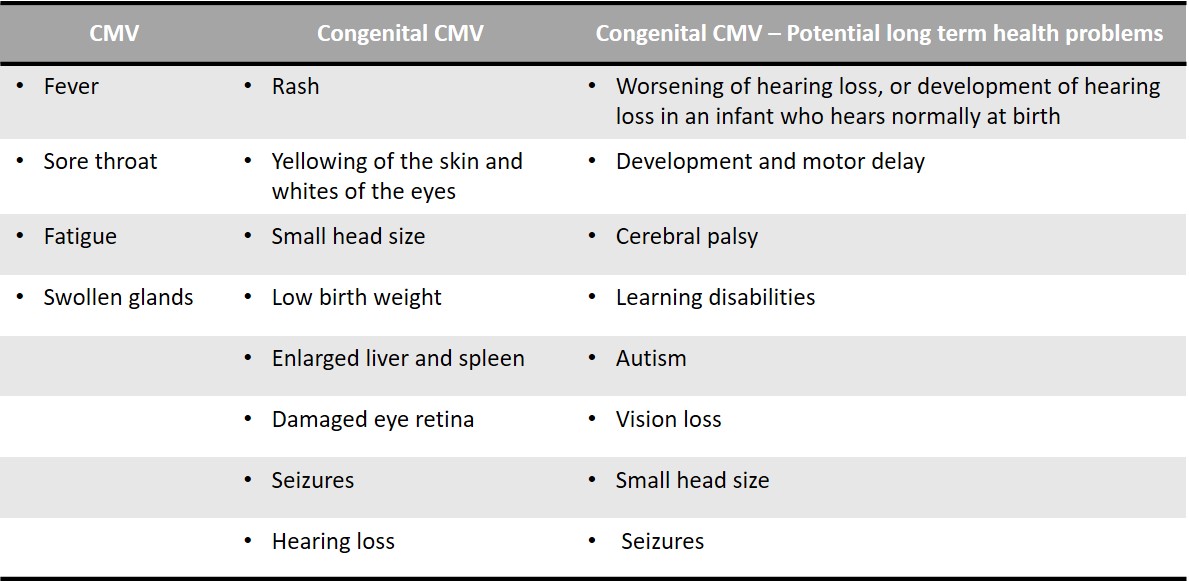
CMV Virus
The CMV virus is a member of the Herpesvirus family of viruses. This family includes some commonly known viral infections of humans, including chickenpox and Epstein-Barr virus (the cause of most cases of infectious mononucleosis). Like all members of the Herpesvirus family, the CMV virus persists for life, once infection occurs. CMV infections are ubiquitous - most infections are asymptomatic, and over 80% of people around the world have been infected with CMV (https://onlinelibrary.wiley.com/doi/pdf/10.1002/rmv.2034). The CMV virus genome is made up of double-stranded DNA, and the viral DNA and protein is protected by a lipid envelope (see figure here), which is embedded with virus-encoded proteins that have emerged as potential targets for experimental CMV vaccines.
Congenital CMV
Congenital CMV is when a baby is born with CMV. If a woman is infected with CMV when she is pregnant and it is the first time she has ever had the virus in her body, there is a small chance she may pass it to the baby. According to the CDC, one out of every 200 babies is born with congenital CMV. However, most babies born with CMV will never show signs or symptoms of the virus. Only one in five babies born with congenital CMV will have long-term health problems. Symptoms of congenital CMV will be different for each child and can range from mild to severe. Infants who have symptomatic disease at birth are more likely to have long-term disabilities, including neurodevelopmental disabilities and hearing loss, than asymptomatic babies.
Signs and Symptoms

Transmission
- Direct contact with body fluids from an infected person (urine, saliva, blood, etc.)
- From breast milk to nursing infants
- Through transplanted organs and blood transfusions
- From a woman to her unborn child, likely via the blood and through the placenta
Prevention
- Wash hands often, especially after touching a child’s urine, saliva, or body fluids
- Avoid sharing food, cups, eating utensils, or a toothbrush with other people
- Don’t clean a baby’s pacifier with your mouth
- Avoid contact with saliva when kissing a child
Diagnosis
Blood tests can diagnose CMV infection in adults. Saliva and urine are preferred testing methods in children. To diagnose congenital CMV in babies, testing must occur within the first 2-3 weeks of life.
Treatment
Healthy people who are infected with CMV do not require treatment. There is no treatment that results in permanent eradication of the virus. But, in patients with CMV disease, antiviral drugs such as ganciclovir or valganciclovir, can improve disease outcomes and limit the duration of symptoms. Infants with symptomatic congenital CMV have improved hearing and neurological outcomes if they are treated with antiviral therapy. It is unknown if antiviral therapy improves the hearing or neurodevelopmental outcomes of asymptomatic congenital CMV infection.
The National CMV Foundation (https://www.nationalcmv.org) provides a source for extensive and outstanding background information on congenital CMV infection.
Source: https://www.cdc.gov/cmv/index.html
Additional information about the impact of congenital CMV can be found in this manuscript.